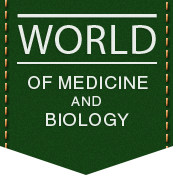Article
DYNAMICS OF CHANGES IN S-100 PROTEIN AND NEURON-SPECIFIC ENOLASE IN RABBITS WITH OCULAR CONTUSION AND ITS CORRECTION WITH L-LYSINE – (S)-2,6-DIAMINOHEXANOIC ACID 3-METHYL-1,2,4-TRIAZOLYL-5-THIOACETATE
| About the author: | O. E. Shelest, S. I. Semenenko, А. V. Saienko, L. A. Vozniuk, O. М. Semenenko, O. О. Nefodova, O. V. Morozova |
| Heading | EXPERIMENTAL MEDICINE |
| Type of article | Scentific article |
| Annotation | Eye injuries are a serious medical and social problem, the relevance of which is significantly increasing in conditions of military conflicts. Damage to the visual organs can cause temporary or permanent vision loss, significantly affecting the quality of life of those affected and their ability to work. In peacetime, the main causes are domestic, industrial, and sporting incidents. At the same time, in military conditions, up to 16 % of all combat injuries occur to the organs of vision, of which about 80 % are associated with the effects of blast waves. Biochemical markers are an important aspect of understanding the mechanisms of such damage. In particular, the enzyme neuron-specific enolase and the S100 protein are indicators of nerve tissue damage. neuron-specific enolase, an intracellular enzyme, indicates damage to neuronal membranes, while increased levels of S100 protein indicate an inflammatory reaction in glial tissue, active division of neuroglial cells, and neuroapoptosis. The presence of these markers in the blood allows us to assess the severity of damage and the effectiveness of therapeutic measures. The relevance of neuroprotection in the treatment of eye injuries is due to the need to protect and restore the nervous structures of the eye, particularly the retina and optic nerve. The study found that therapy with Angiolin eye drops significantly reduced the markers of neurodestruction in the serum of rabbits with ocular contusion. Namely, neuron-specific enolase decreased by 87.2 % and S100 by 89.9 %. The results of the study confirm the pronounced neuroretinoprotective effect of the drug Angiolin. |
| Tags | ocular contusion,optic nerve,retina,neuron-specific enolase,S100 protein,neuroprotection |
| Bibliography |
|
| Publication of the article | «World of Medicine and Biology» №1(91), 2025 year, 199-202 pages, index UDK 615.2:617.7-001.3:577.1 |
| DOI | 10.26724/2079-8334-2025-1-91-199-202 |
